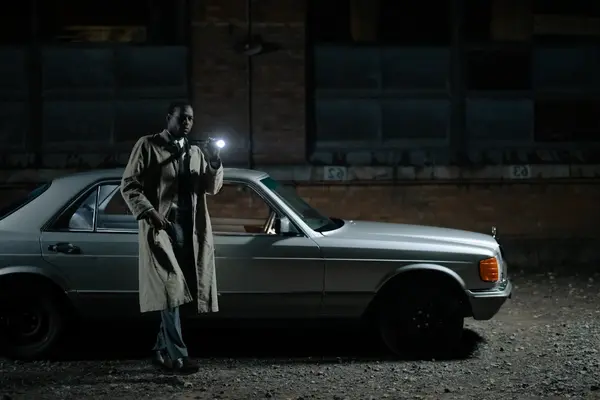Night Watches and Hidden Cameras: Inside the Art of the Investigative Stakeout

The world of private investigations has always been a mysterious place, and the investigative stakeout is one of the most well-known pictures from that time.
A lot of real-life investigations are built around long nights spent in parked cars, the glow of a camera viewfinder, and the quiet strain of watching without being seen.
However, stakeouts are not just scary movie scenes. They need time, technology, and instinct, and they’re planned out and very specific.
Even though spying tools and methods have changed over the years, the art of the stakeout is still one of the most important ways to find the truth.
Understanding the Purpose Behind Stakeouts
At its core, an investigative stakeout has only one goal: to gather proof in secret. The stakeout is an important tool for gathering accurate information, whether the goal is to keep an eye on a possible fake workers’ compensation claim, find a lost person, or write down what a subject does every day.
Stakeouts give visible proof of actions and behaviors in real time, while other types of investigations may rely on databases or interviews.
This kind of observation not only backs up what people think, but it also often shows things that were not expected that can completely change the course of a study.
Planning is Everything in Surveillance
Before the operator even gets close to the target area, a detailed pre-stakeout plan must be made. This includes finding out the person’s known habits, how they usually move, and what they do each day.
Investigators often do “dry runs” to get a feel for the area, find the best viewing points, and check out the lighting, traffic, and activity in the neighborhood.
A stakeout can quickly fail if it’s not well planned. Bad timing, not being able to hide, or not having enough equipment can ruin the whole task and possibly reveal the subject.
The Role of Technology in Modern Stakeouts
No longer are glasses and a notebook all that an investigator needs. Technology is a very important part of modern monitoring.
The way stakeouts are done has changed because of hidden cameras, GPS trackers (when allowed), audio devices, and night vision cameras. These tools let agents get high-quality footage of a target without being close to them, which lowers the chance of being caught. To protect their results and keep them secret, many professionals also use encrypted messaging apps and cloud-based storage.
Mastering the Art of Blending In
Some of the hardest things about a stakeout are staying hidden. Investigators have to naturally fit in with their surroundings, whether they are pretending to be utility workers, parking in a car that doesn’t stand out, or walking through a crowded area.
The goal is to keep an eye on the subject without making them suspicious. Changing stakeout positions every so often, wearing the right clothes, and not doing the same things over and over again can make all the difference between a successful operation and one that fails.
The Mental Game of Waiting
Stakeouts don’t usually have a lot going on. Most of them require hours of doing nothing followed by short periods of intense observation.
This emotional roller coaster can be hard on the body. Investigators have to keep their eyes focused for long amounts of time, often in uncomfortable situations.
It’s normal to feel tired, bored, and have problems with the environment. That’s why having the right mindset and being ready are just as important as having the right skills.
Mindfulness meditation, deep breathing, and mental exercises are common ways for experienced agents to stay focused and avoid getting distracted.
Documenting Evidence Without Compromise
Everything is important during the stakeout. Professionals are taught to carefully record events, writing down the time, place, and situation of every important action.
Photos and videos are often marked with the time they were taken, and records are made for every shift and change in the environment.
This data could be used in court cases or given to clients who need support for civil or criminal cases. Having reliable proof of this can make the difference between a strong case and one that fails in court.
Legal and Ethical Boundaries of Surveillance
Stakeouts are very strong, but they must be done in a way that follows the law and is moral. In each state and country, the laws about privacy, filming, and breaking the law are different.
An analyst who works for a living needs to know what is okay and what the line is. If you don’t follow these rules, an investigation could go wrong, and the detective and client could be sued or charged with a crime.
Ethics-based surveillance protects people’s rights while still gathering strong, accurate proof.
When Stakeouts Go Wrong
Trouble can happen at any stakeout, no matter how well it is planned. The subject sometimes starts to look suspicious.
Sometimes, things in the surroundings, like bad weather or large groups of people that you didn’t expect, make it hard to see.
A quiet operation can sometimes become a high-stakes situation when the subject acts aggressively. This is why planning for the worst is so important.
If things go wrong, a good investigator always has a backup plan, different points of view, and a way to talk to people. With practice, you can learn to know when to back off or give up on an operation.
Real-Life Applications of Stakeout Investigations
It’s not just cheating spouses or insurance scams that can lead to a stakeout. They are used to find corporate spies, find lost people, stop stalking, and even by journalists and documentary filmmakers.
They give clients first-hand information about actions that would otherwise be kept secret, giving them information that they couldn’t get any other way. Stakeouts are one of the most useful and flexible tools a detective can use.
Choosing the Right Investigator for the Job
There are different kinds of stakeouts and different kinds of people who do them. You should hire someone who is licensed, has experience, and knows how to properly do surveillance, follow the law, and keep proof safe.
A well-done stakeout can give you clear answers and peace of mind, but a badly done one can raise more questions than it answers.
Always look at the investigator’s qualifications and ask about past cases. Also, make sure they have the right tools and way of thinking for your needs.
Investigative stakeouts are an important part of modern investigations because they use both tried-and-true methods and the newest technology to find the truth when it means the most.
Every part of a good stakeout requires accuracy, patience, and professionalism, from keeping quiet while watching to carefully writing down what you see.
When used by experienced agents, this method can yield strong proof that has a real effect. If you’re seeking trusted surveillance services rooted in experience and discretion, visit lawservepro.com to connect with experts who understand what it takes to get results.
Jamie Siminoff Net Worth: Wealth, Biography & Journey 2025



